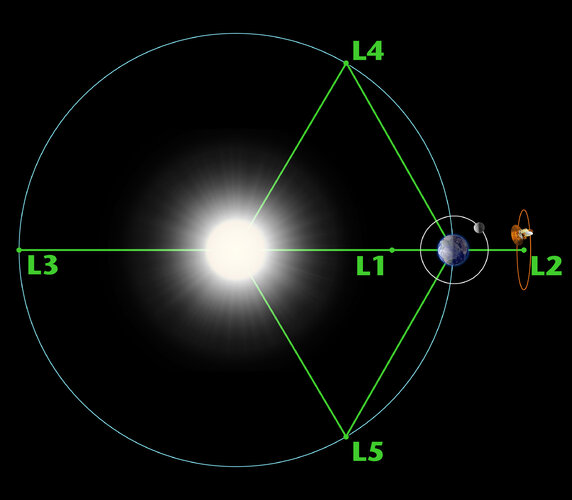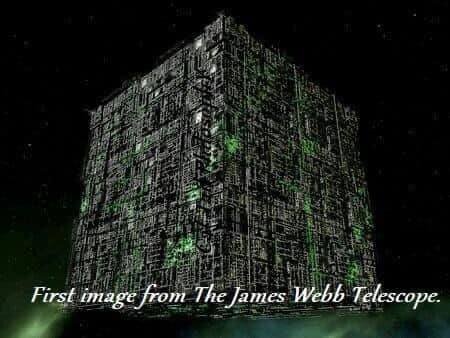Navigation
Install the app
How to install the app on iOS
Follow along with the video below to see how to install our site as a web app on your home screen.
Note: This feature may not be available in some browsers.
More options
You are using an out of date browser. It may not display this or other websites correctly.
You should upgrade or use an alternative browser.
You should upgrade or use an alternative browser.
James Webb Space Telescope (1 Viewer)
- Thread starterbonnjer
- Start date
- Latest activity Latest activity:
- Joined
- Sep 20, 1998
- Messages
- 14,002
- Reaction score
- 23,118
- Age
- 55
Offline
So cool...
- Joined
- Oct 24, 2000
- Messages
- 15,087
- Reaction score
- 13,530
- Age
- 47
Offline
It is incredible that they've done this with such great success. Now, the truly long wait begins until we can get some images.
- Joined
- Jul 18, 1998
- Messages
- 25,409
- Reaction score
- 55,169
Offline
six months right?It is incredible that they've done this with such great success. Now, the truly long wait begins until we can get some images.
Offline
So i have seen numerous vids about Lagrange points, but none have explained why the need to actually orbit around it (L2)? There's no mass to orbit around...to me it's just a fairly stable point in space from a gravity standpoint.
Sailorsaint
Guest
- Joined
- Mar 8, 2005
- Messages
- 14,431
- Reaction score
- 25,830
Online
The mass that the JWST orbits at L2 is the Sun and the Earth. It's actually considered an unstable lagrange point. The JWST is in the L2 because the Earth keeps it in the shadow of the Sun, less interference.So i have seen numerous vids about Lagrange points, but none have explained why the need to actually orbit around it (L2)? There's no mass to orbit around...to me it's just a fairly stable point in space from a gravity standpoint.

Offline
I get the existence of the L points and why it's ideal to park stuff there, but why the orange circle indicating an orbit around L2 WHILE orbiting the sun? The perpendicular orbit around L2 while it tracks the earth orbit around the sun? Why not just hang out out there at L2?
Sailorsaint
Guest
- Joined
- Mar 8, 2005
- Messages
- 14,431
- Reaction score
- 25,830
Online
I get the existence of the L points and why it's ideal to park stuff there, but why the orange circle indicating an orbit around L2 WHILE orbiting the sun? The perpendicular orbit around L2 while it tracks the earth orbit around the sun? Why not just hang out out there at L2?
And Webb will orbit around L2, not sit stationary precisely at L2. Webb's orbit is represented in this screenshot from our deployment video (below), roughly to scale; it is actually similar in size to the Moon's orbit around the Earth! This orbit (which takes Webb about 6 months to complete once) keeps the telescope out of the shadows of both the Earth and Moon. Unlike Hubble, which goes in and out of Earth shadow every 90 minutes, Webb will have an unimpeded view that will allow science operations 24/7.

Orbit - NASA Science
ChopperSaint
Official gum of champions
Offline
This is going to change the world forever
- Joined
- Oct 24, 2000
- Messages
- 15,087
- Reaction score
- 13,530
- Age
- 47
Offline
It already has. The technology they had to develop in order to properly align the mirrors is already being used for eye surgeries. I heard that on one of the NASA livestreams the other day.This is going to change the world forever
- Joined
- Oct 24, 2000
- Messages
- 15,087
- Reaction score
- 13,530
- Age
- 47
Offline
Excellent.

 www.yahoo.com
www.yahoo.com
James Webb Space Telescope captures its first images of a star
The James Webb Space Telescope has captured its first star imagery, plus a 'selfie' of its main mirror.
- Joined
- Sep 20, 1998
- Messages
- 14,002
- Reaction score
- 23,118
- Age
- 55
Offline
This is mind boggling. I feel like a knuckle dtlragging Neanderthal next these scientists. I mean I knew they were smart but this is beyond me.
Offline
Users who are viewing this thread
Total: 2 (members: 0, guests: 2)

